Screening refers to testing individuals who have no symptoms for a particular disease. In context to cancers, screening tests are done to detect cancer before they cause any apparent symptoms.
Early detection is important because when cancer is found early, it may be easier to treat and we have higher chances of a cure.
Why should I get screening tests done?
Most cancers are already in advanced stages when they are diagnosed, and hence carry a poor outlook.
If these cancers can be detected at an early stage, it could be possible to treat them completely or prevent their further spread.
Early detection of cancer through screening reduces mortality from cancers of the colon and rectum, breast, cervix, prostate, and lung.
Types of Cancer Screening Tests
Each type of cancer has its own screening tests. Some types of cancer do not have an effective screening method at present.
-
Breast cancer
These are the screening tests available for breast cancer:
Mammography
It uses low-dose x-rays to look for any suspicious swellings/lumps in the breast. The images produced by mammography can show lumps or irregularities in the breast. These images are called mammograms. Typically, these images are taken by placing the breast between 2 plates comprising source and detector film.
For many women, mammograms are the best way to find breast cancer early. However, In 10 to 15% of cases, mammography may fail to identify existing cancer.
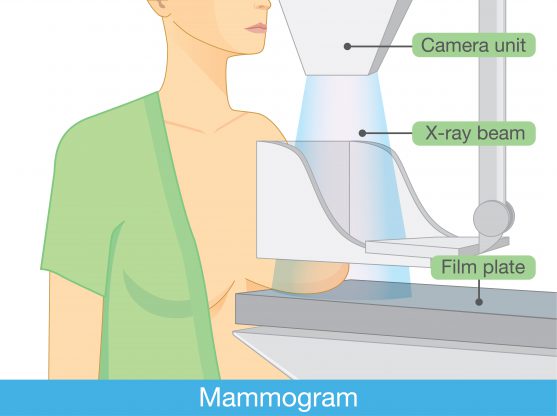
Clinical breast examination
It is carried out by a doctor and involves a thorough physical examination of the breast and underarm. During this examination the doctor would assess for:
- Any changes in the size and shape of the breast
- Lump in the breast
- Any swollen lymph nodes in the armpit and neck region
- Any nipple discharge
Breast self-examination
In this procedure, the woman may examine herself to look for any changes or abnormalities in her own breast.
According to studies, about 40% of breast cancer cases were detected in women who felt breast lumps during the self-breast examination.
Breast Magnetic Resonance Imaging (MRI)
Breast MRI is not always recommended as a screening tool. It is usually combined with a mammogram and is recommended in women who have a high risk of breast cancer or dense breasts.
-
Cervical cancer
Cervical cancer can be detected at an early-stage by the following tests:
HPV testing
Women with human papillomavirus (HPV) infection have a higher risk of developing cervical cancer. Therefore, the HPV testing is recommended in such women.
HPV testing can be done alone, or can also be combined with Pap testing.
In the HPV test, a soft brush is inserted inside the cervix to collect the samples of cervical cells. These cells are examined in the laboratory to look for specific strains of HPV that are linked to cervical cancer.
Pap testing
The Pap test is a procedure that collects cells from the cervix so that they can be examined by a pathologist in the laboratory to find any cancerous or precancerous cells.
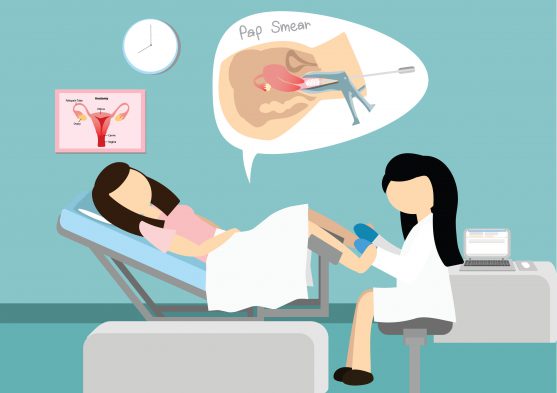
-
Colorectal cancer
The following tests may help in determining colorectal cancer during the early stage:
Colonoscopy
In this test, the doctor looks at the entire length of the colon and rectum with a colonoscope. It is a flexible tube with a light and small video camera on the end.
Special instruments can be passed through the colonoscope to take a biopsy sample or to remove any suspicious-looking areas such as polyps, if needed.
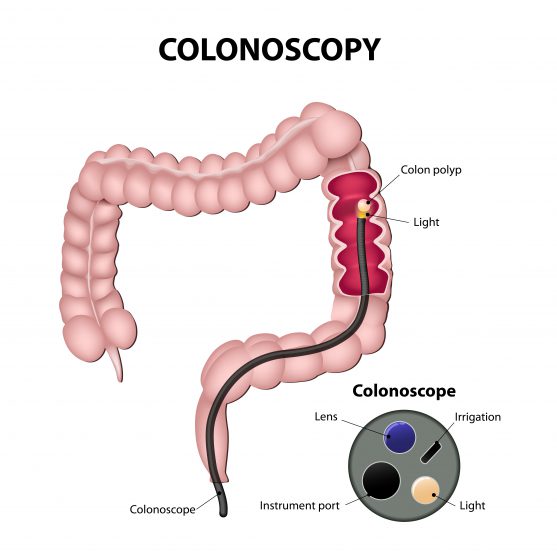
Faecal occult blood test (FOBT)
This test is done to detect the presence of blood in the stools, which may indicate polyps or cancers.
Stool DNA tests
This test identifies DNA changes in the cells of a stool sample and looks for abnormal DNA associated with colon cancer or polyps.
The test also detects hidden blood in the stool, which can indicate the presence of cancer.
-
Lung cancer
Low-dose computed tomography (LDCT)
This scan is the only screening test recommended for lung cancer.
LDCT is a non-contrast study (which means IV contrast is not used) obtained with a multidetector CT scanner with a scanning time under 25 seconds. Radiation dose exposure is less than a third of a standard-dose diagnostic chest CT scan.
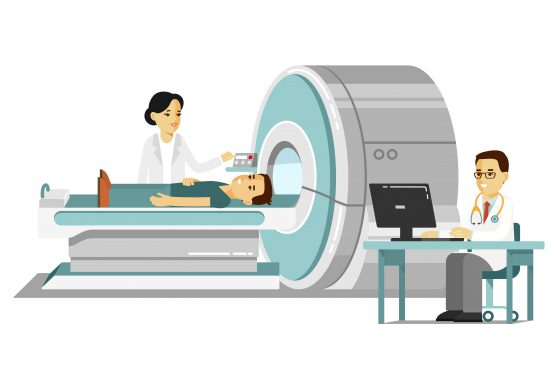
Low-dose Computed Tomography (LDCT)
-
Prostate cancer
Prostate cancer screening can be done with two tests. These include:
Digital rectal examination (DRE)
In this test, the examiner inserts a lubricated, gloved finger into the patient’s rectum to examine the surface of the prostate for any irregularities.
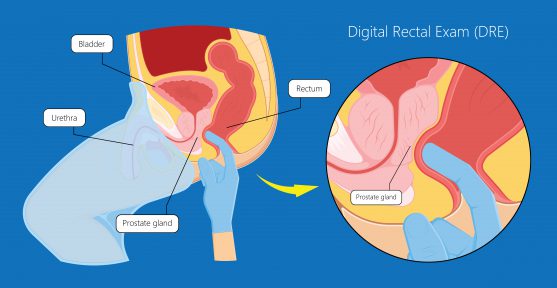
Prostate-specific antigen (PSA) test
It is a type of blood test, in which the level of prostate-specific antigen (PSA) is checked. A high PSA level may indicate prostate cancer.
However, high PSA levels do not always indicate prostate cancer, it can be a sign of other prostate-related conditions too.
You can read more about blood test screening for prostate cancer here.
How can I get screened?
Deciding to undergo a screening test is a personal choice. However, before opting for a screening test, one must consult a doctor and get all the necessary information about the pros and cons of the screening tests.
Also, before screening, the person must inform the doctor about their personal and family history, based on which their eligibility for the screening tests may be decided.
Risks of Screening
Like all other procedures or tests, cancer screening also has some risks. These risks include:
- Overdiagnosis: Sometimes, a screening test may detect problems that might never cause any harm. This may result in unnecessary treatment.
- False-positive results: In some cases, these tests may suggest cancer even when the person does not have it, causing emotional trauma and unnecessary treatment.
- Need for additional tests: Additional tests are required to confirm the screening test results if any abnormalities are detected in screening reports.
- False reassurance: In some cases, the screening test may fail to show cancer when the person actually has it.
Criteria for screening recommendation
According to the American Cancer Society, the following guidelines are suggested for specific cancers:
-
Breast cancer
| Age of a woman | When to start screening |
| 40 to 44 years | You can begin cancer screening annually with mammograms especially for high risk individuals. |
| 45 to 54 years | You must undergo screening every year with mammograms |
| >55 years | You need to switch to a mammogram for every 2 years or can continue screening every year. Breast cancer screening can be done as long as the women are in good health and are expected to live 10 more years or longer. |
-
Cervical cancer
Screening for cervical cancer should be initiated at the age of 25 years.
Women between 25 to 65 years must undergo a primary HPV test every five years.
If there is no primary HPV test, then a co-test, i.e., an HPV test with Pap test, is recommended every five years, or only a Pap test every three years could be appropriate.
-
Colorectal cancer and Polyps
People who have an average risk of colorectal cancer should begin screening at the age of 45 years.
If the person is in good health, they must continue screening till 75 years.
People between the age of 76 to 85 years must talk to their doctors before continuing the screening. However, personal preferences, overall health, and past screening history are considered in this age group.
People over the age of 85 years are not eligible for screening.
An average risk individual does not have a personal or family history of colorectal cancer, personal history of inflammatory bowel disease like Crohn’s or ulcerative colitis.
-
Lung cancer
Lung cancer screening must be done every year in individuals aged between 55 to 74 years who are in good health and who:
- have a history of heavy smoking. Heavy smoking means a smoking history of 30 pack years or more. A pack year is smoking an average of one pack of cigarettes per day for one year. For example, a person could have a 30 pack-year history by smoking one pack a day for 30 years or two packs a day for 15 years.
- are current smokers or have quit smoking for the past 15 years.
- are ready to receive counselling for smoking cessation if they are current smokers.
- are aware of the possible benefits and risks associated with screening.
The increase in the number of cancer cases and the poor prognosis of most cancers has intensified current research efforts in the early detection of this disease.
India is undergoing rapid urbanization, resulting in lifestyle changes and dietary changes. So, it is necessary to focus on cancer prevention.
Government and non-government organizations can play a vital role in spreading awareness about cancer causes and their prevention.
Early detection can only be possible by effective and efficient screening programs.



